Lea Wait's Blog, page 241
December 30, 2016
Weekend Update: December 31, 2016-January 1, 2017
 Next week at Maine Crime Writers, there will be posts by Kaitlyn Dunnett/Kathy Lynn Emerson (Monday) Bruce Coffin (Tuesday), Brenda Buchanan (Wednesday), Dick Cass (Thursday) and Lea Wait (Friday).
Next week at Maine Crime Writers, there will be posts by Kaitlyn Dunnett/Kathy Lynn Emerson (Monday) Bruce Coffin (Tuesday), Brenda Buchanan (Wednesday), Dick Cass (Thursday) and Lea Wait (Friday).
In the news department, here’s what’s happening with some of us who blog regularly at Maine Crime Writers:
An invitation to readers of this blog: Do you have news relating to Maine, Crime, or Writing? We’d love to hear from you. Just comment below to share.
And a reminder: If your library, school, or organization is looking for a speaker, we are often available to talk about the writing process, research, where we get our ideas, and other mysteries of the business. Contact Kate Flora
December 29, 2016
Before Hartland: A Look back
John Clark looking at a place and time that saw many changes in the 26 years we lived there. A year after Beth and I got married, interest rates and inflation started rising at a frightening clip. We’d saved a fair amount, so we started house hunting. In hindsight, we were fairly clueless about what we wanted and how much we could afford. The first place we looked at was in Readfield. The walk-through was an adventure. The owners had drenched the interior with spray on foam insulation to a point where it was difficult to stand upright. I’m sure it would have been easy to heat, but we weren’t hobbits.
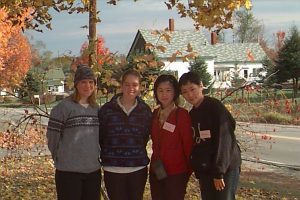
Sara and Lisa with Japanese exchange students on our front lawn in Chelsea.
Our second look was at a place on Route 226 in Chelsea. It was a reasonable distance from Augusta and had just over six acres of land. What we didn’t immediately realize was that it had been on the market for some time and the upper part had once burned. Whoever repaired it had done a half baked job and the pitch on the back side of the roof was perfect…For ice dams and water backing up after a snow storm (more about that later).
Worried the mortgage rate would jump even further, we bought the place. This was in early fall and our first winter was a rude awakening. The house had an older hot air furnace and minimal insulation. Neither Beth nor I had much in the way of rebuilding skills or experience, but we entered the learn as you do world pretty fast. By the second winter, we’d replaced pretty most of the interior walls with better insulation and new sheetrock. The son of a co-worker built us an exterior chimney and a brick hearth. We bought a used airtight stove from another co-worker and I rigged a small high-speed fan behind it that did a decent job of circulating heat.

Lisa and Sara in front of the wood stove at Christmas.
Fortunately I liked cutting wood and between what we cleared behind the house and wood I cut on Sennebec Hill Farm, we never lacked for firewood. In fact, there were two winters where we hit an accidental abundance. The first was when I lucked into getting the pallet recycling contract at AMHI where I worked. I’d been stealing pickup loads at night when I worked late, unaware that they were overloaded and wanted someone foolish enough to take them off their hands. I bid the princely sum of ten dollars for a year’s worth of them puppies. It wasn’t long before I had too many. Some I rebuilt and sold, but most got taken apart and cut up. Since the majority were hardwood, people who weren’t fussy were happy to buy a pick-up load of cut up ones even with all the nails still in the wood. We burned plenty ourselves. I even had the dubious experience of losing a load coming up the hill to the east side rotary during rush hour.
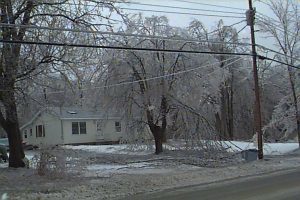
Looking at our neighbor’s house during the ice storm.
The other bonus came right after the Ice Storm of 1998. The Town of Windsor reacted by doing a major tree removal along Route 105. Many of the property owners were thrilled to have adventurous souls buck up the downed trees and haul them away. I netted more than 20 pickup loads that way.
The property was a never ending adventure. When we moved in, there was a jungle of weeds, an old pigsty and a garbage dump behind the house. We wanted a garden, so I set about taming the land. My first adventure came while tearing up what was left of the sty. I managed to drop a large rotten beam on my leg where a rusty spike penetrated my thigh. Off for repairs and a tetanus booster. In the process of clearing more junk, we discovered we had an antiquated septic system that consisted of a big rusty circular tank in the ground and a jury-rigged series of pipes spreading under thin soil. I made the mistake of hiring a local contractor to come in with the understanding that he would scoop up the big rocks beyond this contraption and move them down back so we’d have some garden space. Instead of using a bucket, he used a blade and in the process of pushing them to one side, he not only scraped away most of the soil, he completely flattened the drainage pipes. We were left with a bed of semi-fractured ledge and no drainage field.

One of many nighttime burns we had as we reclaimed the back yard.
There are advantages to living in a small Maine town. A major one is that you can get away with a lot of code violations. I set a speed record rebuilding and covering the drainage field and spent the next year using a crowbar and a sledge hammer to break up as much ledge as possible. After building an elevated sifting screen, I literally screened the whole damn back yard, adding the rocks and pebbles to the leach field behind the garden.
After a few years of raising great crops of rocks, the soil, having been enriched with horse and hen manure, shredded leaves and chopped up seaweed, started producing pretty decent veggies. We added apple trees and a plum and a cherry as well as several grape vines and two butternut trees. Every year, we’d expand the back yard a bit further toward the small swamp at the bottom of the slope behind the garden. I also cut a trail into the back of our property and put up a tree stand, using a couple of the remaining pallets. October became my favorite month. I could come home from work and be in the stand with my bow with an hour to hunt. I liked the quiet and solitude. Even though it was just a couple hundred yards from the road, it was mostly silent save for the woodland creatures. Chickadees often landed close enough so I could feed them out of my hand.
Winter brought another adventure I wasn’t prepared for. Every time we got measurable snow, I had to rake the back roof. That involved ladders, taking my life in my hands while trying to keep my footing on the lower roof over our dining room and not eating a gallon of snow in the process. Is it any wonder one of our major criteria when we began looking at homes in the Hartland area was a metal roof and NO need to rake?
I don’t want to go on too long, so next time I’ll share the culture and characters we encountered while living in Chelsea. I’d be interested in your memories of the first home you owned.
Library Talk Postponed
Just in case you were planning to drive to Carrabassett Valley Library this afternoon to hear four of our Maine Crime Writers speak, this is to let you know that the event has been postponed due to the incoming snowstorm. Check back here or at individual writers’ webpages for information on rescheduling. Stay warm everyone!
December 27, 2016
Crime lover or not, it’s time you caught podcast fever
I’ve got podcast fever. And I’m not afraid to admit it.
I resisted podcasts for a long time. I’d listened to the first season of Serial and really liked it, but that was it. Every time someone (mostly my sister) told me I should listen to this one or that one, I said if I’m going to just listen to something, I like my music. And yes I CAN listen to an endless loop of Tangled Up in Blue-Rosalita-I Want to Know What Love Is without getting tired of it. It’s how I roll.
My sister Becky had even been insisting for some time she and I do our own podcast. I resisted that even more — no way would it mesh well with my journalism career. If I was going to do a podcast, I wanted to speak my mind unfettered and occasionally use my favorite swear word, which begins with m, ends with r and has an f in the middle. Hint: It’s not mayflower.
But then a bunch of stuff happened at the right time: iTunes’ sabotage of my music library continued to such a frustrating extent my endless loop of favorite songs got smaller and smaller until practically all that existed was the U2 album they snuck on there that I can’t delete (memo to iTunes: I SKIP THOSE SONGS); my journalism career ended, I moved within blocks of my sister, and we attended this year’s New England Crime Bake, where the hosts of the popular podcast Crime Writers On… not only taped an episode of the show from the mystery writers conference (they even interviewed me on the air!), but also presented a panel on how you, yes you, can produce your own podcast.

The hosts of Crime Writers On… from left, Rebecca Lavoie, Kevin Flynn, Lara Bricker and Toby Ball, let Maureen Milliken join the fun at Crime Bake in November.
Becky kept saying, “See, I told you.” And she had. So we were off and running.
I won’t go into all the nitty gritty, but once we created our own website, figured out how to do an RSS feed, found a host (thanks blubrry!), and, oh yeah, figured out a very loose theme and structure, we were up and running with Crime & Stuff, “The podcast you’d do if you didn’t have better things to do.”
A funny thing has happened since Crime Bake. Besides I’m now editing Episode 6 of our own podcast (everything you wanted to know about JonBenet Ramsey but were afraid to ask), I also can’t stop listening to podcasts. So long endless loop of music I’ve been listening to for years. Hello all sorts of people talking about cool and interesting stuff.
I am especially drawn to crime topics. You probably are too if you’re a regular reader of this blog. I’m by no means an expert on what’s out there in podcast land, but here are some podcast suggestions to get you started if you have been resisting, like I was. I know you have too much to do! But the beauty of podcasts is you can listen to them while doing something else.
I’d be a jerk if I didn’t start out with the folks who got me hooked, Crime Writers On… New Hampshire broadcast journalists Rebecca Lavoie and Kevin Flynn (the cutest couple in the Northern New England audio world); true crime writer/former journalist/licensed PI Lara Bricker and noir thriller writer Toby Ball weekly discuss podcasts (and some other things). They are pros and keep things hopping, but they’re also funny as hell. Lavoie usually interviews a podcast producer, and their in-depth discussions of podcasts are informed and, I’ll freely admit, have tipped me to most of the podcasts I listen to now.

A CBC image for the podcast Missing & Murdered
My favorite so far is Missing and Murdered, Who Killed Alberta Williams? A CBC production, the show follows reporter Connie Walker and her producer Marnie Luke as they look into the cold case murder of a woman in British Columbia, but also explores Canada’s treatment of indigenous people and the shameful legacy of unsolved murders of women in the country. And I love those Canadian accents!
I just tonight finished Breakdown: Season 2, an Atlanta Journal-Constitution 17-episode production that covers the trial of Justin Ross Harris, who was convicted last month of murder after he left his 2-year-old son in the car on a hot day in 2014. Bill Rankin, a 25-year reporting veteran who covered the trial for the newspaper, does a great job presenting the story with wry humor, but also humanity. He’s not afraid to call out the lawyers or cops when they’ve overstepped or misled — something that’s fun for this (former!) journalist to listen to and is one of the things that makes podcasts a great addition to regular news coverage. I plan to now listen to Season 1, which looks at the case of Justin Chapman, who was convicted of murdering an elderly neighbor and burning down her house. I can’t get enough of Rankin and his reporting.
My sister Becky’s favorite is My Favorite Murder, hosted by Karen Kilgariff and Georgia Hardstack, who discuss murders that interest them and also read emails from fans describing their own hometown murders. We’ve been asked if we’re “trying to be like” the My Favorite Murder gals with our own podcast. The answer is we’re not, we’re just being ourselves. But listening to them convinced me that it’s OK to be ourselves, and we don’t have to be as polished as the other podcasts I’ve named here. And when I learn how to do the audio better, or we can hire someone to do it for us, we may even be as smooth as these gals.

The logo my sister Becky created for our podcast Crime & Stuff
As for our own podcast, we’re just having fun. It’s a big learning curve figuring out how to do audio (especially since we could only afford one broadcast-grade microphone and free Audacity software), but we still hope to be interesting enough for people to listen. Our premise is that we take a crime story that’s been in the news or that interests us, and do some research to bring listeners a more detailed story than what they may have seen on TV or the web. Our first episode, Twisted Sisters: A Tale of Yoga and Death, was custom-made for what we were trying to do. I’d seen a 30-second TV news story on the topic of the death by plunging off a cliff in an SUV of Anastasia Duval and the subsequent arrest of her sister Alexandria for murder and was confused as hell. Becky delved into the story and it all became clear. More or less. We’ve even had some special guests: my high school classmate Matt Nichols, a Portland criminal defense attorney, is featured in our “Ask a Lawyer” segment each week and we convinced Ben McCanna, who covered the Ayla Reynolds disappearance in Waterville, Maine, for the Morning Sentinel newspaper during the first year of the investigation, to be on our episode marking the fifth anniversary of her disappearance.
We don’t take ourselves too seriously, hence our accidental catchphrase (remember? It’s “The podcast you’d do if you didn’t have better things to do.”) But we’re also excited to be part of a creative community where just about anything goes.
If you haven’t already, it’s time you checked out the world of podcasting. Turn off the TV and take a look. It doesn’t have to be about crime if you’re not interested (again, you’re reading this blog why?) I guarantee you’ll find something you won’t be able to stop listening to, and you’ll be hooked too.
EVENT: Thursday, December 29, Maureen Milliken, Jen Blood, Bruce Coffin and Vaugh Hardaker will be part of the Carrabassett Valley Library‘s Maine Crime Writers Death & Desserts presentation, 4:30-6:30 p.m. They’ll also be signing and selling books. Snow? What snow? As of this writing, the event is still on, so strap on your Maine-ness and get over there.
Maureen Milliken is the author of the Bernie O’Dea mystery series. Follow her on Twitter at@mmilliken47 and like her Facebook page at Maureen Milliken mysteries. Sign up for email updates at maureenmilliken.com. She hosts the podcast Crime&Stuff with her sister Rebecca Milliken.
December 26, 2016
It’s Twins–Liz Mugavero and Barbara Ross Celebrate New Releases
by Barb. Packing madly. Leaving tomorrow for Key West.
My friend Liz Mugavero and I are celebrating a double book birthday today. Not only do we have the same agent (John Talbot) and the same editor (John Scognamiglio at Kensington Books), we are also both launching the fifth book in our respective series. Before the craziness of the holidays was upon us, I sat down with Liz to talk about this experience.
Barb: Five books! I can believe we made it. Custom Baked Murder is the fifth in your Pawsitively Organic Pet Food Mystery series, and Iced Under is the fifth in my Maine Clambake Mystery series. So, I’m asking you. What do you know now that you didn’t know when you started?
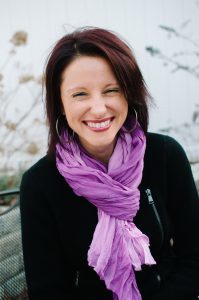 Liz: It’s crazy, right? We’ve written a lot of books in the last few years. To answer your question, wow, I don’t think I knew anything! Besides the fact that I knew I could write a book, I didn’t know if I could write a good one. I didn’t know how crazy the publishing world was. And I didn’t know how the heck I was going to juggle a day job with my deadlines.
Liz: It’s crazy, right? We’ve written a lot of books in the last few years. To answer your question, wow, I don’t think I knew anything! Besides the fact that I knew I could write a book, I didn’t know if I could write a good one. I didn’t know how crazy the publishing world was. And I didn’t know how the heck I was going to juggle a day job with my deadlines.
I also didn’t know what an amazing experience it would be to become part of the Wicked Cozy Authors, and to meet so many readers who enjoy my books, and how much fun it would be to write this series – and also how challenging to make sure I can continue to provide quality entertainment with each story. Which brings up my question to you, Barb. How do you keep your stories and characters fresh?
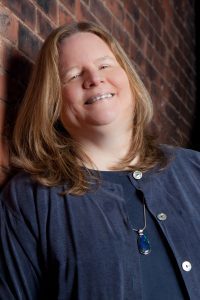 Barb: Argh. Great question and something I think about all the time. Despite what some people think, there is no formula for writing cozy mysteries. (Believe me, there are days, when I’m struggling, when I wish there were.) I keep the stories fresh by changing them up. For example, in the fourth book, Fogged Inn, we discover the body in the very first line. “Julia, there’s a dead guy in the walk-in!” In the new book, Iced Under, we don’t learn about the death until page 106, and we never see the body. These changes give an entirely different structure to the narrative. As for the characters, I keep them moving forward. My protagonist Julia’s life has changed profoundly with her return to Busman’s Harbor, Maine. She’s building new relationships and figuring out her life, for good and for ill, just like all of us. So tell me, five books in, is there anything you regret? Would you change any characters, situations or places if you had to do it again?
Barb: Argh. Great question and something I think about all the time. Despite what some people think, there is no formula for writing cozy mysteries. (Believe me, there are days, when I’m struggling, when I wish there were.) I keep the stories fresh by changing them up. For example, in the fourth book, Fogged Inn, we discover the body in the very first line. “Julia, there’s a dead guy in the walk-in!” In the new book, Iced Under, we don’t learn about the death until page 106, and we never see the body. These changes give an entirely different structure to the narrative. As for the characters, I keep them moving forward. My protagonist Julia’s life has changed profoundly with her return to Busman’s Harbor, Maine. She’s building new relationships and figuring out her life, for good and for ill, just like all of us. So tell me, five books in, is there anything you regret? Would you change any characters, situations or places if you had to do it again?
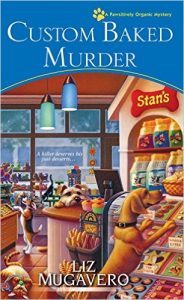 Liz: Hmmm. Regrets are so easy to find, aren’t they? That said, there isn’t anything major I wish I could change in these books. I was thinking the other day about Stan’s family. When I wrote the first book, it was sort of an impulse to give her a snobby, rich mother who tried to interfere in certain areas of Stan’s life. That could’ve gone either way as I got deeper into the series, but it turned out to be a good choice. I’ve had a lot of fun working with Stan’s family and her relationship with them, and her mother ended being more of a permanent character than I think I ever intended. And now her sister has snuck in to the narratives too, which is another opportunity for some fun interactions. It’s also all part of Stan’s character arc.
Liz: Hmmm. Regrets are so easy to find, aren’t they? That said, there isn’t anything major I wish I could change in these books. I was thinking the other day about Stan’s family. When I wrote the first book, it was sort of an impulse to give her a snobby, rich mother who tried to interfere in certain areas of Stan’s life. That could’ve gone either way as I got deeper into the series, but it turned out to be a good choice. I’ve had a lot of fun working with Stan’s family and her relationship with them, and her mother ended being more of a permanent character than I think I ever intended. And now her sister has snuck in to the narratives too, which is another opportunity for some fun interactions. It’s also all part of Stan’s character arc.
I do think I could’ve sketched out the town a little better in the first two books. I’m forever trying to make sure things make sense as the town’s grown and I’ve added storefronts, etc. But I think it works. So with all that in mind, Barb, do you find it easier to write the books the further into the series you get, or were the earlier books easier?
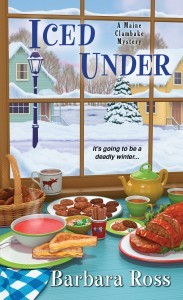 Barb: As you know, Liz, first drafts are my bete noire and they don’t get any easier to write. But I guess, as I gain experience, it does get easier to let go of at least some of the gnawing anxiety and believe it’s all going to come together in the end.
Barb: As you know, Liz, first drafts are my bete noire and they don’t get any easier to write. But I guess, as I gain experience, it does get easier to let go of at least some of the gnawing anxiety and believe it’s all going to come together in the end.
But that’s been replaced by a new anxiety. With the first book in this series, I had no idea if it was going to be good. I was determined to write the best book I could, but if it wasn’t good, it wasn’t good. Now I have fans, who have expectations for quality. Disappointing them has become my new anxiety.
I guess you can’t win for losing!
Best of luck with Custom Baked Murder, Liz. I’ve read it and I loved it.
Liz: Same to you! And good luck with book six.
Both: Happy New Year, everyone!
About Custom Baked Murder: Summer is winding down in Frog Ledge, Connecticut, but Stan’s love life and career are both heating up nicely. In between planning her new pet patisserie and café, Stan is settling into living-in-bliss with sexy pub owner Jake McGee. Love’s on the menu for Stan’s mom, Patricia, too, who’s engaged to Frog Ledge’s mayor, Tony Falco. When Mayor Falco’s executive coach, Eleanor Chang, is found dead, there’s a whole pack of suspects to choose from. But finding out who forced her to take a fatal plunge off the corporate ladder means unearthing some shady secrets…and a killer who’s too close for comfort. Includes Gourmet Pet Food Recipes!
About Iced Under: The snow is deep in Maine’s Busman’s Harbor and the mighty rivers are covered in ice. Snowden Family Clambake Company proprietor Julia Snowden and her mother, Jacqueline, are hunkered down for the winter when a mysterious package arrives—heating up February with an unexpected case of murder . .
Save
Save
December 25, 2016
Happ-E Reading, Everyone
We hope you are having pleasant holidays, and enjoying some time to read this season. In case you’ve missed any of our recent releases, here’s a recap of some of our latest books:
Brenda Buchanan: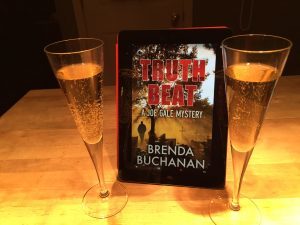
Truth Beat-A respected priest’s suspicious death leads to revelations in Riverside, Maine.
Dick Cass: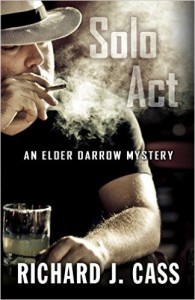
Solo Act-an alcoholic buys a dive bar in Boston and has to prove the death of his jazz-singer lover was not really a suicide.
Bruce Coffin: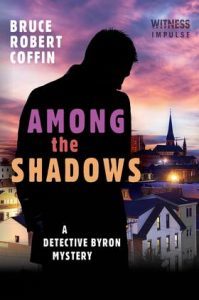
Among the Shadows-Fall in Portland, Maine usually arrives as a welcome respite from summer’s sweltering temperatures and, with the tourists gone, a return to normal life—usually. But when a retired cop is murdered, things heat up quickly, setting the city on edge.
Kaitlyn Dunnett/Kathy Lynn Emerson: Just to be a bit different, here are the links to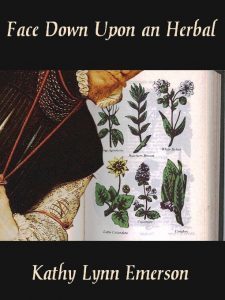 an oldie but goodie, the second Face Down mystery, Face Down Upon an Herbal (w/a) Kathy Lynn Emerson, in which Susanna, Lady Appleton celebrates Christmas . . . in the mid-sixteenth century.
an oldie but goodie, the second Face Down mystery, Face Down Upon an Herbal (w/a) Kathy Lynn Emerson, in which Susanna, Lady Appleton celebrates Christmas . . . in the mid-sixteenth century.
https://itunes.apple.com/us/book/face-down-upon-an-herbal/id417124634?mt=11
http://www.barnesandnoble.com/w/face-down-upon-an-herbal-kathy-lynn-emerson/1100069435
Kate Flora: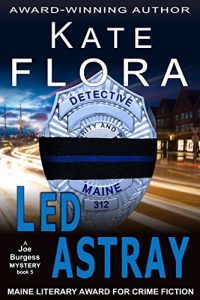
Led Astray-In the 5th Joe Burgess police procedural, police officers are lured into an ambush. Now Burgess and his team race against time to find the shooter before a police officer’s funeral results in a massacre.
Amazon http://amzn.to/2dvTuxC
Kobo: https://goo.gl/DDmSdL
Google Play: https://goo.gl/jyGtS6
iTunes: https://goo.gl/g5vmu6
Maureen Milliken: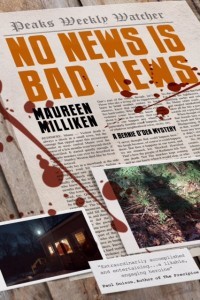
No News is Bad News-a case from the past haunts Police Chief Pete Novotny, while the unexpected arrival of newspaper editor Bernadette “Bernie” O’Dea’s brother opens a deadly can of worms. What does all this have to do with a hunter’s grisly finding in the woods? The residents of Redimere, Maine, still recovering from the deadly summer of Cold Hard News, brace for more answers they may not want to know.
http://sandhbooks.com/story/bernie-odea-mysteries/no-news-is-bad-news/
Brendan Rielly: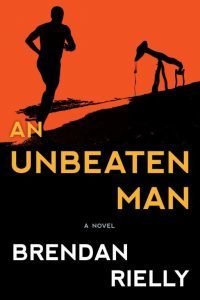
An Unbeaten Man-When Bowdoin College microbiologist creates a microbe that instantly cleans up any oil spill, no matter how large, by devouring the oil, that discovery should be the breakthrough that defines a career. But his life is ruined when The Global Group kidnaps his wife and daughter, forcing him to use his microbe to destroy all Saudi and Russian oil.
Barbara Ross: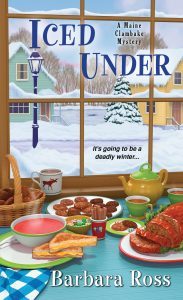
Iced Under-The snow is deep in Maine’s Busman’s Harbor and the mighty rivers are covered in ice. Snowden Family Clambake Company proprietor Julia Snowden and her mother, Jacqueline, are hunkered down for the winter when a mysterious package arrives—heating up February with an unexpected case of murder . . .
The fifth Maine Clambake Mystery ships on December 27. Here are the links for Kindle, Kobo, Nook, Apple iBooks, and Google.
In case you’re behind on your series (and have a gift card burning a hole in your pocket) all the previous books in the series are on sale on those same platforms.
Lea Wait: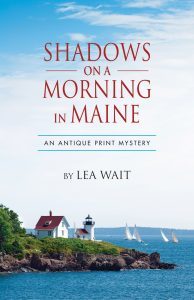
Shadows on a Maine Morning-Antique print dealer Maggie Summer‘s moving to Maine, starting a business with her beau – and adopting a child. But as she struggles with secrets from the past and the present, she begins to wonder whether moving to Maine was the biggest mistake of her life.
Susan Vaughan: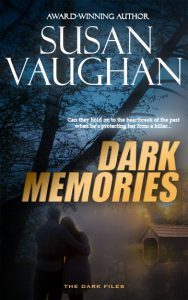
Dark Memories- After museum curator Laura Rossiter witnesses a murder and the cop guarding her is killed, she runs for her life. She survives months by working odd jobs under an assumed name and landing in a Maine resort where she finally feels safe. Until bad-boy Cole Stratton rides his Harley back into her life.
http://getBook.at/DarkMemories
December 23, 2016
Weekend Update: December 24-25, 2016
 Next week at Maine Crime Writers, there will be posts by Kate Flora (Monday) Barb Ross (Tuesday), Maureen Milliken (Wednesday), John Clark (Thursday) and then something still to be determined on (Friday).
Next week at Maine Crime Writers, there will be posts by Kate Flora (Monday) Barb Ross (Tuesday), Maureen Milliken (Wednesday), John Clark (Thursday) and then something still to be determined on (Friday).
In the news department, here’s what’s happening with some of us who blog regularly at Maine Crime Writers:
 Barb: A December 27 release means I’m not doing much in the way of physical appearances. However I am doing a blog tour with my friend Liz Mugavero, whose book, Custom Baked Murder, A Pawsitively Organic Pet Food Mystery, is out the same day as Iced Under.
Barb: A December 27 release means I’m not doing much in the way of physical appearances. However I am doing a blog tour with my friend Liz Mugavero, whose book, Custom Baked Murder, A Pawsitively Organic Pet Food Mystery, is out the same day as Iced Under.
In addition to our blog here on Tuesday, here’s where we have been/ will be…
Tuesday, December 20, 2016, Killer Characters.
Wednesday, December 21, 2016, Escape with DollyCas.
Monday, December 26, 2016, Femmes Fatales.
Tuesday, December 27, 2016, Jungle Red Writers AND Kingdom Books, Mysteries — Classic to Cutting Edge.
Wednesday, December 28, 2016, Dru’s Book Musings.
Thursday, January 5, 2017, Mystery Lovers Kitchen.
An invitation to readers of this blog: Do you have news relating to Maine, Crime, or Writing? We’d love to hear from you. Just comment below to share.
And a reminder: If your library, school, or organization is looking for a speaker, we are often available to talk about the writing process, research, where we get our ideas, and other mysteries of the business. Contact Kate Flora
Save
December 22, 2016
What the Dickens!
Dorothy Cannell: In the past I have always squirmed when asked the inevitable
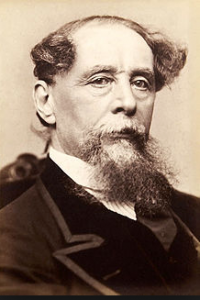
Charles Dickens
question of this time of year: “Are you all ready for Christmas?” The answer, because one cannot risk telling lies with Santa listening, was always a squeaked: “No.” There were those one thousand two hundred cookies left to bake, presents still to buy and wrap, overlooked Christmas cards to send, more ornaments to be added to the tree if it weren’t to make visitors feel they should donate to it. But this season of official good cheer is blissfully different. Daughter Shana who lives nearby broke the news in November that she and her family were going to Jamaica for Christmas and invitations to visit our other children had to be turned down because it wouldn’t be morally right to leave new puppy Watson behind. And taking him on a plane could be traumatic to his little psyche.
“I suppose this means it’ll “be just you and me,” said my husband Julian, making no attempt to look dismal. “No point in putting up decorations or doing a load of baking.”
“You’re right,” I agreed. “That’ll leave me with plenty of time to shop for presents and get them mailed off.”
“Why not gift certificates stuck in with Christmas cards?”
“We could have candles. We’ve got quite a lot and no real planning goes into lighting them.”
“And perhaps some of that hot wine punch simmering on the stove after dinner.”
“Dinner,” I said; “can’t we skip that tradition, too?”
“If that’s what you want; but how much energy does a ham, and perhaps a few roasted vegetables and an apple pie take?”
“Not much for the person whose only job is to eat it, but you’re right, we mustn’t turn into Scrooges.”
 How magical is the power of pressure lifted. I have had a lovely few days buying presents and mailing them off. Julian bought and hung a plaque that says “This house is protected by elves.” We have invited a friend for Christmas dinner … and I even may do some baking. Additionally I found time to recall a poem I wrote in English class when I was nine which I now send you with the best of good cheer.
How magical is the power of pressure lifted. I have had a lovely few days buying presents and mailing them off. Julian bought and hung a plaque that says “This house is protected by elves.” We have invited a friend for Christmas dinner … and I even may do some baking. Additionally I found time to recall a poem I wrote in English class when I was nine which I now send you with the best of good cheer.
Christmas is coming on its way
Nearer and nearer every day
Soon the bells will begin to ring
While the children carols sing
And this is what will be sung
A merry Christmas every one.
Dorothy
December 21, 2016
Time To Move On
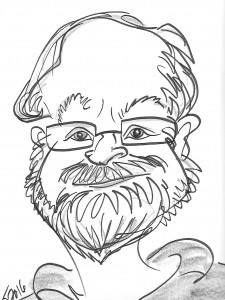 On December 2, I embarked on a trip that would affect me more than I ever realized. My sister-in-law asked me to go to Orlando, Florida and bring back her late son’s car. I agreed and decided to drive down and tow the car back on a car carrier. I also resolved to spend a day in Washington, DC and visit The Wall for the first time. I served in Vietnam in 1968-69 and, like anyone who was there, lost a number of friends. It was, I thought, time that I saw the memorial to them.
On December 2, I embarked on a trip that would affect me more than I ever realized. My sister-in-law asked me to go to Orlando, Florida and bring back her late son’s car. I agreed and decided to drive down and tow the car back on a car carrier. I also resolved to spend a day in Washington, DC and visit The Wall for the first time. I served in Vietnam in 1968-69 and, like anyone who was there, lost a number of friends. It was, I thought, time that I saw the memorial to them.
The Wall is located (as are the Korean War and World War II memorials, I visited all of them) within a few minutes walk from the Lincoln Memorial. The day was sunny and as crisp as an early fall day here in The County so I decided to wear my Marine Corps leather jacket with patches from all of the units in which I served (I must add that it was the first time I wore it in public). As we walked from the Lincoln Memorial toward The Wall we came upon the Vietnam Memorial (not the same as the wall–see picture) and took a photo of me standing in front of it.
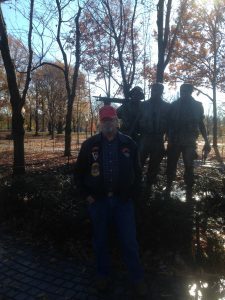 Turning from the statue and walking to the entrance to The Wall was an experience that I will never forget. I steeled myself to show my usual tough Marine appearance and was doing all right until my partner, Jane, reached over with a tissue and wiped the tears from my face. I believe that at that moment all of the resentment I showed in regard to the treatment we received upon returning home disappeared. In fact when a woman passed by and said “Thank you for your service” I replied “You’re welcome. I’d do it again.” (You may remember my blog of last year in which I ranted about people saying, “Thank you for your service.” and how I felt that they lacked sincerity.)
Turning from the statue and walking to the entrance to The Wall was an experience that I will never forget. I steeled myself to show my usual tough Marine appearance and was doing all right until my partner, Jane, reached over with a tissue and wiped the tears from my face. I believe that at that moment all of the resentment I showed in regard to the treatment we received upon returning home disappeared. In fact when a woman passed by and said “Thank you for your service” I replied “You’re welcome. I’d do it again.” (You may remember my blog of last year in which I ranted about people saying, “Thank you for your service.” and how I felt that they lacked sincerity.)
I turned toward the mall and felt a strange serenity come over me. The Wall is surrounded 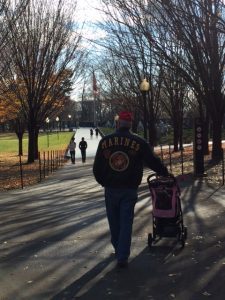 by several busy streets and I heard none of the cars, trucks, and buses; it was as if I’d entered a cone of silence. Later Jane would laugh at me and say, “Some big bad Marine you are–walking toward The Wall, crying, and pushing a stroller with a five pound Maltese in it.” I smiled Maggie, the Maltese, is my Attack Fu-Fu; she barks at anyone who comes near Jane or I–at The Wall she was as silent as if she understood how this visit was important to me. For forty-eight years I’d been carrying around a sense of guilt that I survived when so many of my friends and fellow servicemen did not.
by several busy streets and I heard none of the cars, trucks, and buses; it was as if I’d entered a cone of silence. Later Jane would laugh at me and say, “Some big bad Marine you are–walking toward The Wall, crying, and pushing a stroller with a five pound Maltese in it.” I smiled Maggie, the Maltese, is my Attack Fu-Fu; she barks at anyone who comes near Jane or I–at The Wall she was as silent as if she understood how this visit was important to me. For forty-eight years I’d been carrying around a sense of guilt that I survived when so many of my friends and fellow servicemen did not.
At the wall we were immediately greeted by George, a Vietnam Veteran who volunteered at The Wall to assist visitors. He took one look at my face and asked, “When were you there?”
I replied, “January 1968 to February 1969.”
He said, “Those were two of the worst years.” Then added: “This is your first time, right?”
My throat constricted and I had a difficult time answering him. “C’mon,” he said, “I’ll show you around. We stopped beside a panel and he showed me the diamonds beside some of the names and said: “The diamonds and crosses indicate whether a person is confirmed dead (those who died in accidents are included) or missing/whereabouts unknown. The diamond indicates a person’s death was confirmed. The crosses indicate that a person remains missing and unaccounted for and are not a religious symbol. A cross symbol can be easily turned into a diamond if a person is declared dead (such as the return of their remains). A circle will be inscribed around the plus if the person comes back alive. As of this time, no circle appears on the wall. On the West wall the symbols precede the names, while on the East wall they follow the names.”
As we walked along The Wall, George asked, “Are you looking for any particular names?”
“Four.”
“Who’s first?”
“An old friend from my teen years, Richard Bubar. He was killed in what they called the Halloween Massacre the night of October 31- November 1, 1964.”
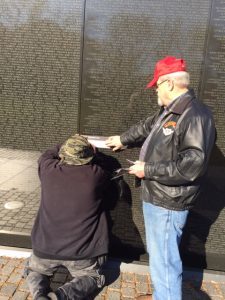 In no time George located the name. “Would you like a rub?”
In no time George located the name. “Would you like a rub?”
“Is that allowed?” I asked.
George opened his coat and suspended from his belt was packet of special paper and a stick of graphite. We did four rubs that day:
Richard P. Bubar. Richie was a longtime friend of mine and the son of my parents best friends. He was killed during a mortar attack. Date of Death: November 1, 1964. (Of the first three Maine men to die in Vietnam, two were from Caribou, Richie was the second.)
Dana L. Mace. A friend from high school. Date of Death: July 7, 1969.
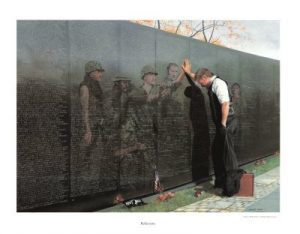
THE WALL by Lee Teter
 Donald S. Skidgel. Born in Caribou. Date of Death: September 14, 1969. Winner of Medal of Honor (Posthumously) for his actions near Song Be, Republic of Vietnam.
Donald S. Skidgel. Born in Caribou. Date of Death: September 14, 1969. Winner of Medal of Honor (Posthumously) for his actions near Song Be, Republic of Vietnam.
Joseph A. Zutterman: Marion, Kansas. Joe took me under his wing when I arrived in Vietnam and when offered a promotion to sergeant if he extended did so. April 15, 1968 was the first day of Joe’s extension and he flew a mission as door gunner. Their helicopter was hit by an RPG (Rocket Propelled Grenade) and exploded. Although we all know that Joe is dead, he is still officially listed as MIA believed Dead because the bodies of the four crew members were not recoverable.
Joe’s death had a profound impact on me and I made up my mind that I was not going to get close to anyone again. Unfortunately, I did so for forty-eight years. My late wife once said to a friend: “Vaughn fought the war in Vietnam; I fight the war in him.
 I spent two hours at The Wall and when I came away I felt as if a great burden had been lifted from me. It was as if the 58, 307 people whose names are there told me that it was all right that I survived and it was past the time for me to move on. The Wall is a memorial to all who made the ultimate sacrifice and a place of healing for the rest of us.
I spent two hours at The Wall and when I came away I felt as if a great burden had been lifted from me. It was as if the 58, 307 people whose names are there told me that it was all right that I survived and it was past the time for me to move on. The Wall is a memorial to all who made the ultimate sacrifice and a place of healing for the rest of us.
This Christmas season, please take a few moments to think about these men and women (yes a great number of women served there too and eight have their names etched on The Wall) and the sacrifice they made so that we, those of us who survived and those of us who came after, have the freedom and liberty to celebrate in the way we want. I for one would willingly do it again in a heart beat.
December 20, 2016
Gardens Aglow in Boothbay, Maine
One of the newest – and most popular – sites to visit in Maine is the Coastal Maine  Botanical Garden (http://www.MaineGardens.org) in Boothbay. Opened in 2007, the garden’s 270 acres of tidal shoreland include a children’s garden (complete with references to famous children’s books set in Maine, a “garden of the senses,” fairy houses, gardens featuring specific plan families, and, everywhere, sculptures, benches, accessible paths, and special exhibits. The gardens also feature a café, gift shop, education center, lecture series, craft programs … you name it. It’s become a destination for people from all over the world. Over 90,000 people from six continents visited in 2016.
Botanical Garden (http://www.MaineGardens.org) in Boothbay. Opened in 2007, the garden’s 270 acres of tidal shoreland include a children’s garden (complete with references to famous children’s books set in Maine, a “garden of the senses,” fairy houses, gardens featuring specific plan families, and, everywhere, sculptures, benches, accessible paths, and special exhibits. The gardens also feature a café, gift shop, education center, lecture series, craft programs … you name it. It’s become a destination for people from all over the world. Over 90,000 people from six continents visited in 2016.
In 2015 for the first time the gardens were lit for Christmas. Gardens Aglow proved an instant success — more than 36,000 guests came in November and December to see the spectacle.
This year it is even more spectacular. More than 350,000 LED lights — more than 31 miles — of lighted strands — wrapped around 325 trees and walls and dangling from branches. (One 75-foot white pine is wrapped with more than 3,000 lights.)
Environmental note: all the lights at Gardens Aglow, for the entire event, will only cost about $100 in electricity.
To add to the excitement, the towns of Boothbay and Boothbay Harbor are simultaneously celebrating the “Festival of Lights” — homes and stores are brightly lit, restaurants and inns and shops are open, and, as the Chamber of Commerce says, the area is “sparkling for the winter.”
 The Gardens are open nightly (Thursday through Sunday nights) from 4-9 p.m. until December 31. Food trucks and a hot chocolate station and a s’mores fire pit are part of the excitement, and the café and gift shop are often. I could tell you Gardens Aglow was worth a visit … but the pictures I took are more convincing. And they can’t begin to show you the magic of lights, or of Christmas in the Gardens.
The Gardens are open nightly (Thursday through Sunday nights) from 4-9 p.m. until December 31. Food trucks and a hot chocolate station and a s’mores fire pit are part of the excitement, and the café and gift shop are often. I could tell you Gardens Aglow was worth a visit … but the pictures I took are more convincing. And they can’t begin to show you the magic of lights, or of Christmas in the Gardens.
Lea Wait's Blog
- Lea Wait's profile
- 509 followers



